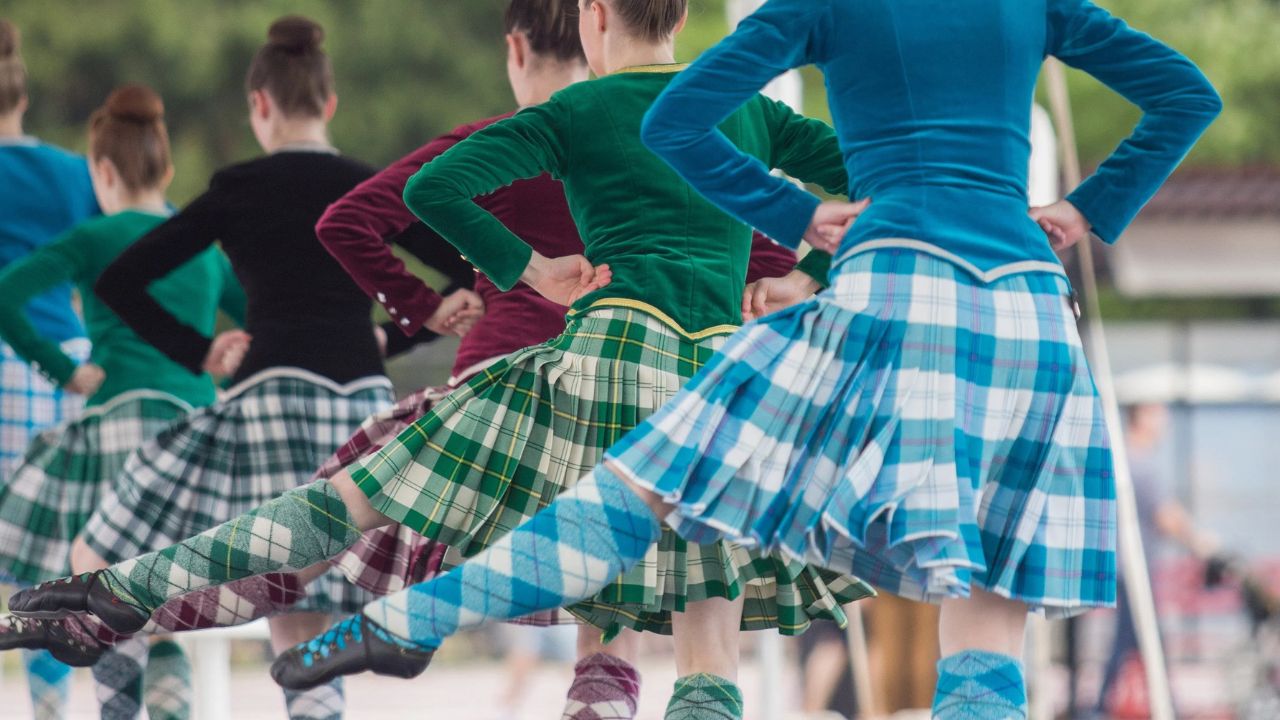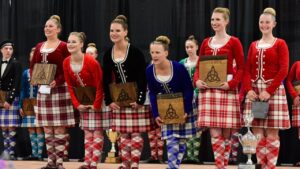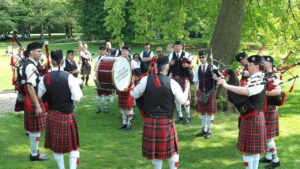For dancers, teachers, and parents, competition day can be both exciting and overwhelming.
Knowing exactly how Highland dance competitions are structured can help you prepare, stay organized, and perform at your best.
Governed by the Scottish Official Board of Highland Dancing (SOBHD) and administered in the U.S. by the Federation of United States Teachers and Adjudicators (FUSTA), competitions follow a well-established schedule and set of procedures.
This guide walks you through the order of events, timing, facilities, scoring systems, and feedback rules so you know exactly what to expect.
How the Competition Day is Structured
1. Event Scheduling
- In most U.S. competitions, Pre-Premier categories (Primary, Beginner, Novice) take place in the morning.
- Intermediate and Premier dancers usually compete in the afternoon.
- The entry form will list the start times, order of dances, and any breaks planned for the day.
2. Order of Dances & Groups
While the specific sequence may vary by organizer, the common order is:
- Primary
- Beginner
- Novice
- Intermediate
- Premier
Within each category, dances are typically performed in the order listed on the entry form.
3. Time Between Dances
- Depends on entry size and judging pace — can be as short as 5 minutes or as long as 30 minutes.
- Organizers aim to allow reasonable recovery time for dancers.
- Larger competitions may have multiple platforms running simultaneously.
Changing Facilities for Dancers
- Organizers may provide designated changing areas, but this is not guaranteed.
- Male dancers often have fewer designated spaces, so plan ahead.
- At outdoor events, many dancers bring personal pop-up tents for privacy and protection from weather.
How the Point System Works
Judges’ Points
- Awarded by each judge for individual dances.
- Range: 0 (disqualification) to 100 (perfect, though rare).
- Used to determine placing for that particular dance.
Dance Points
- Correspond to competition placements:
- 1st = 88 points
- 2nd = 56 points
- 3rd = 38 points
- 4th = 25 points
- 5th = 16 points
- 6th = 10 points
- Added together across all dances in the event to determine overall winners.
Comparison of Judges’ Points vs. Dance Points
| System | Purpose | Scale | Impact on Results |
|---|---|---|---|
| Judges’ Points | Scores for each dance | 0–100 | Determines placing for each dance |
| Dance Points | Placement-based scoring | 88–10 | Determines overall winners |
Why Parents & Dancers Don’t Receive Judge Feedback
- Judges are hired to adjudicate, not coach.
- In a competition, they compare dancers to each other, not to individual improvement goals.
- For constructive feedback, dancers should take medal tests with BATD, SDTA, or UKA examiners, where detailed comments are provided.
Supplies to Bring for Competition Day
Preparation can make or break the competition experience, especially for long events.
For Outdoor Competitions:
- Tents or umbrellas
- Folding chairs
- Sunscreen
- Slip-on shoe covers for muddy or grassy areas
For Indoor Competitions:
- Water and snacks
- Hair and costume repair kits
- A blanket for stretching areas
For All Competitions:
- Registration card
- Extra hairpins, elastic bands, and bobby pins
- Ice packs for minor injuries
Competition Etiquette & Tips for a Smooth Day
Arrive Early
Give yourself time to check in, warm up, and get familiar with the venue.
Follow Announcements
Organizers often make real-time updates to the schedule.
Respect the Judges & Officials
Avoid questioning results during the event; save inquiries for after the awards.
Keep the Dancer Card Handy
It must be presented before receiving any awards for 1st, 2nd, or 3rd place.
Highland dance competitions follow a well-structured format to ensure fairness, efficiency, and enjoyment for all participants.
By understanding the event flow, judging process, and necessary preparations, dancers and parents can focus less on logistics and more on performance.
With the right preparation and mindset, competition day becomes an exciting opportunity to showcase skill, discipline, and the cultural beauty of Highland dancing.
FAQs
Can the order of dances change on competition day?
Yes, organizers can adjust the order due to weather, time constraints, or other factors. Always listen for announcements.
Do dancers have to perform every dance listed in their category?
No, but it’s best to decide with your teacher. Some entry forms may require you to list the dances you plan to perform.
Is there a maximum time allowed between dances?
No official maximum, but most competitions aim for 10–20 minutes between dances for adequate rest.




